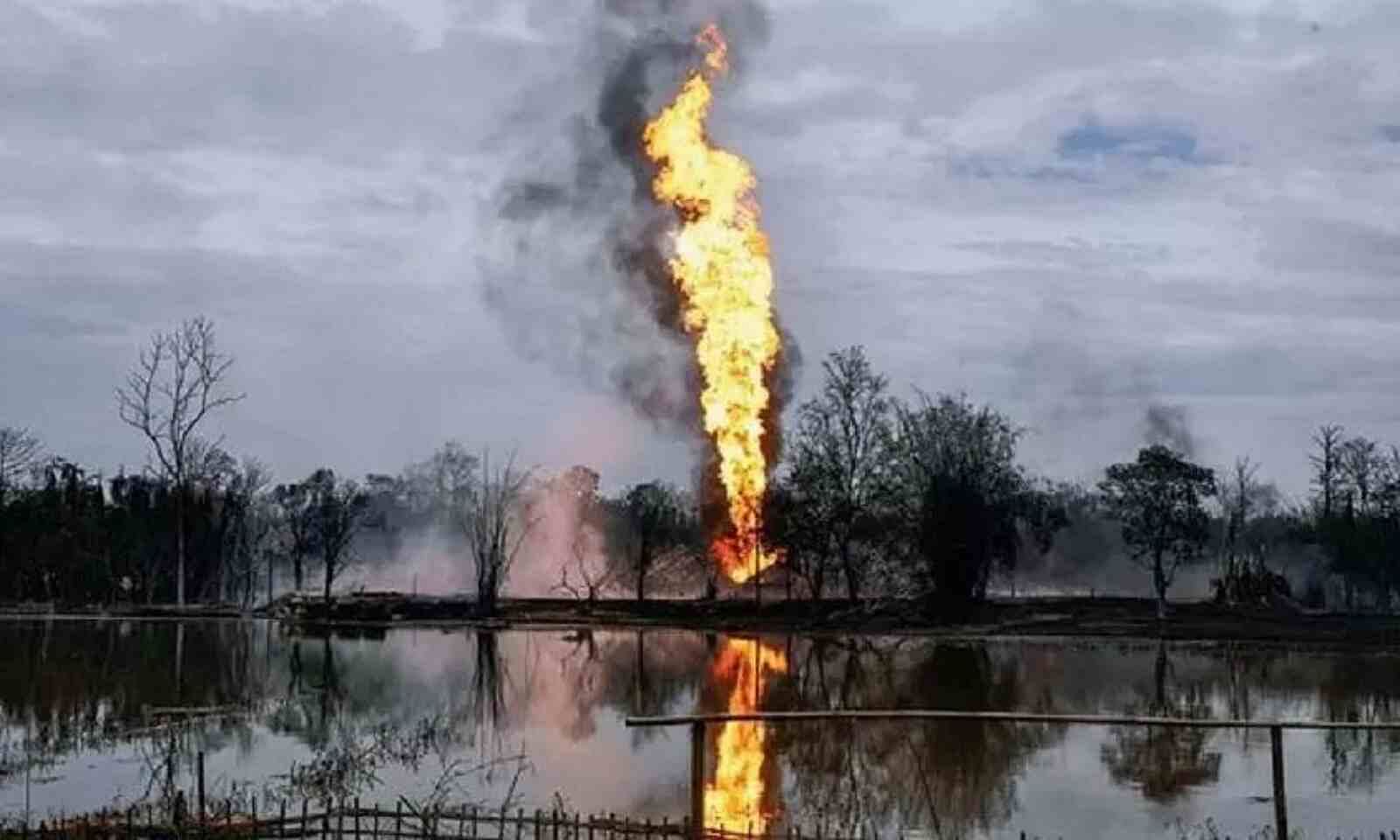Baghjan oil is still raging.
Baghjan oil well No.5 has been burning for the past 5 months in the Tinsukia district of Assam. The first blowout began on May 27 this year and with this it has completed 160 days of continuous blazing of the oil well making it the longest burning oil well in India.
The blown out site is also located next to the Dibru Saikhowa National Park (DSNP). Several attempts have been made to douse the fire in the oil field by the Oil India Limited(OIL) and the results of those attempts have proven bootless.
Protests against OIL are still continuing in the region but that hasn’t seen any political outrage. Social media is flooded with numerous photographs and videos of the gas blazing oil field since the blown-out occurred. This raging fire has led to a large scale environmental and human lives displacement. Baghjan blaze has taken away three lives till today and has displaced many from their homes.
The National Green Tribunal (NGT) set up a committee and submitted reports stating that the Baghjan Oil well and 26 other oil wells were being operated illegally in the state of Assam. The committee set up by the NGT is headed by Justice AK Goel, former judge of the supreme court. The NGT has also set up another committee under former judge BP Katakey to look into the Baghjan blazing incident. These oil wells did not have obligatory environmental clearances according to the Katakey committee.
In a statement issued by the Public Sector Undertaking (PSU) enterprise OIL it had declared that 12 families have been displaced due to loss of home and they have already been compensated with around 25 lakh rupees. These families have been given a monthly livelihood support of Rs 50,000 per month by the company.
OIL left no stone upturned to control the fire at the oil field as they hired experts and made several attempts to seize it with immediate effect. Initially teams from Oil and Natural Gas Corporation (ONGC) and OIL jointly tried to douse the fire. A Singapore-based expert group Alert Disaster Control joined hands to control the fire and diminish damage to the well and the environment, but their efforts did not succeed. The experts then tried to divert the leakage of natural gas with a reason like if there is no fuel-in the form of natural gas-there would be no fire. This strategy made by the experts did not flex the desired results. They then tried to inject “killing fuel” into the well, this tactic was aborted in late September as the casing valve fractured.The oil company has now adopted a new process called ‘snubbing’, where heavy oil well intervention process is used to extinguish the fire. The fire could now be controlled by mid-November say experts.





The Brief. Sign up to receive the top stories you need to know right now.